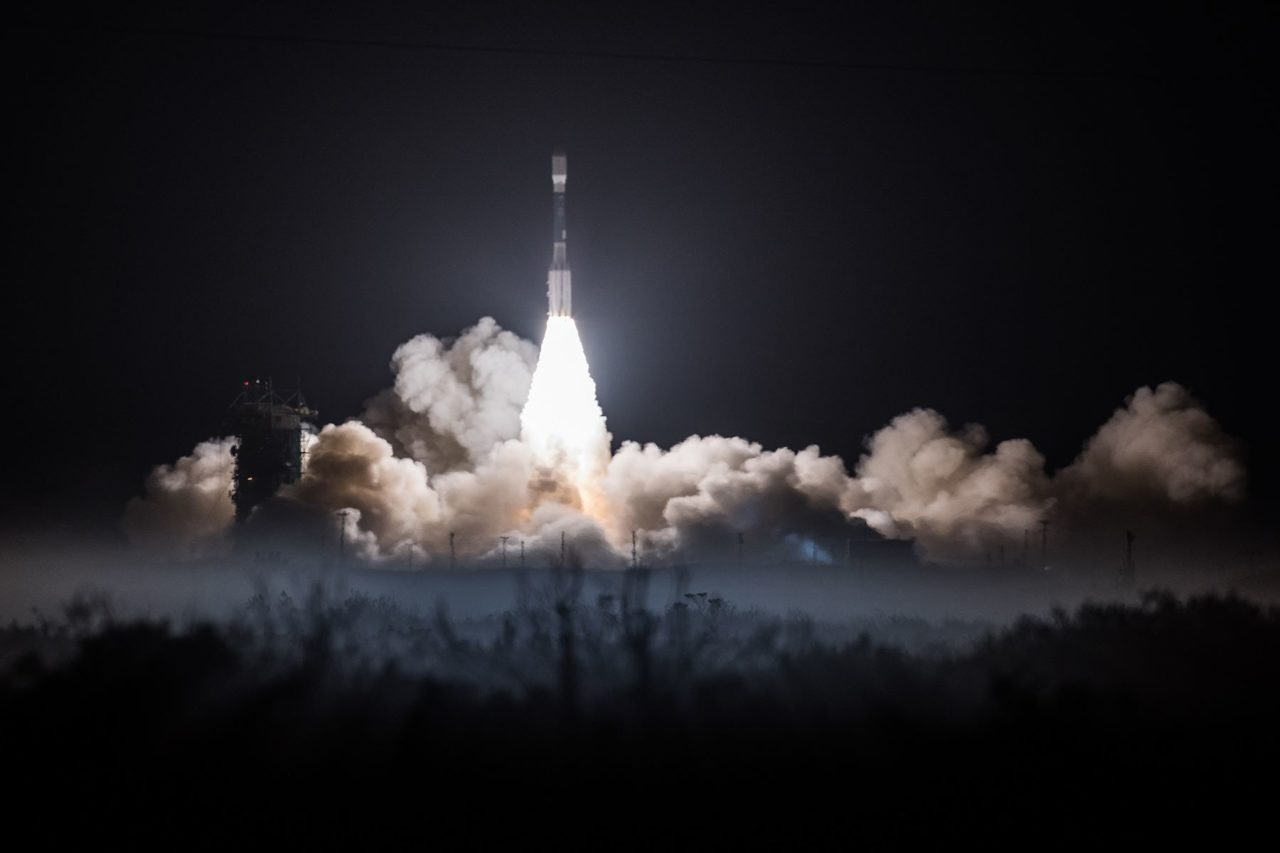Latest News

ULA’s Delta 2 rocket lifts off for the JPSS 1 mission on Saturday, Nov. 18. Photo: ULA.
NASA has successfully launched for the National Oceanic and Atmospheric Administration (NOAA) the first in a series of four polar-orbiting satellites, equipped with next-generation technology and designed to improve the accuracy of U.S. weather forecasts out to seven days. The Joint Polar Satellite System 1 (JPSS 1) lifted off on a United Launch Alliance Delta 2 rocket from Vandenberg Air Force Base, California, in the early morning hours of Saturday, Nov. 18.
Approximately 63 minutes after launch, the solar arrays on JPSS 1 deployed and the spacecraft was operating on its own power. JPSS 1 will be renamed NOAA 20 when it reaches its final orbit. Following a three-month checkout and validation of its five advanced instruments, the satellite will become operational.
JPSS 1 will join the joint NOAA/NASA Suomi National Polar-orbiting Partnership satellite in the same orbit and provide meteorologists with observations of atmospheric temperature and moisture, clouds, sea-surface temperature, ocean color, sea ice cover, volcanic ash, and fire detection. The data will improve weather forecasting, such as predicting a hurricane’s track, and will help agencies involved with post-storm recovery by visualizing storm damage and the geographic extent of power outages.
JPSS 1 has five instruments, each of which is significantly upgraded from the instruments on NOAA’s previous polar-orbiting satellites. The more-detailed observations from JPSS will allow forecasters to make more accurate predictions. JPSS 1 data will also improve recognition of climate patterns that influence the weather, such as El Nino and La Nina.
Ball Aerospace designed and built the JPSS 1 satellite bus and Ozone Mapping and Profiler Suite instrument, integrated all five of the spacecraft’s instruments and performed satellite-level testing and launch support. Raytheon built the Visible Infrared Imaging Radiometer Suite and the Common Ground System. Harris built the Cross-track Infrared Sounder, while Northrop Grumman Aerospace Systems built the Advanced Technology Microwave Sounder and the Clouds and the Earth’s Radiant Energy System instrument.
In addition to JPSS 1, this mission includes five CubeSats which launched from dispensers mounted to the Delta 2 second stage. The miniaturized satellites will conduct research in 3D-printed polymers for in-space manufacturing, weather data collection, bit flip memory testing, radar calibration and the effects of space radiation on electronic components.
Get the latest Via Satellite news!
Subscribe Now